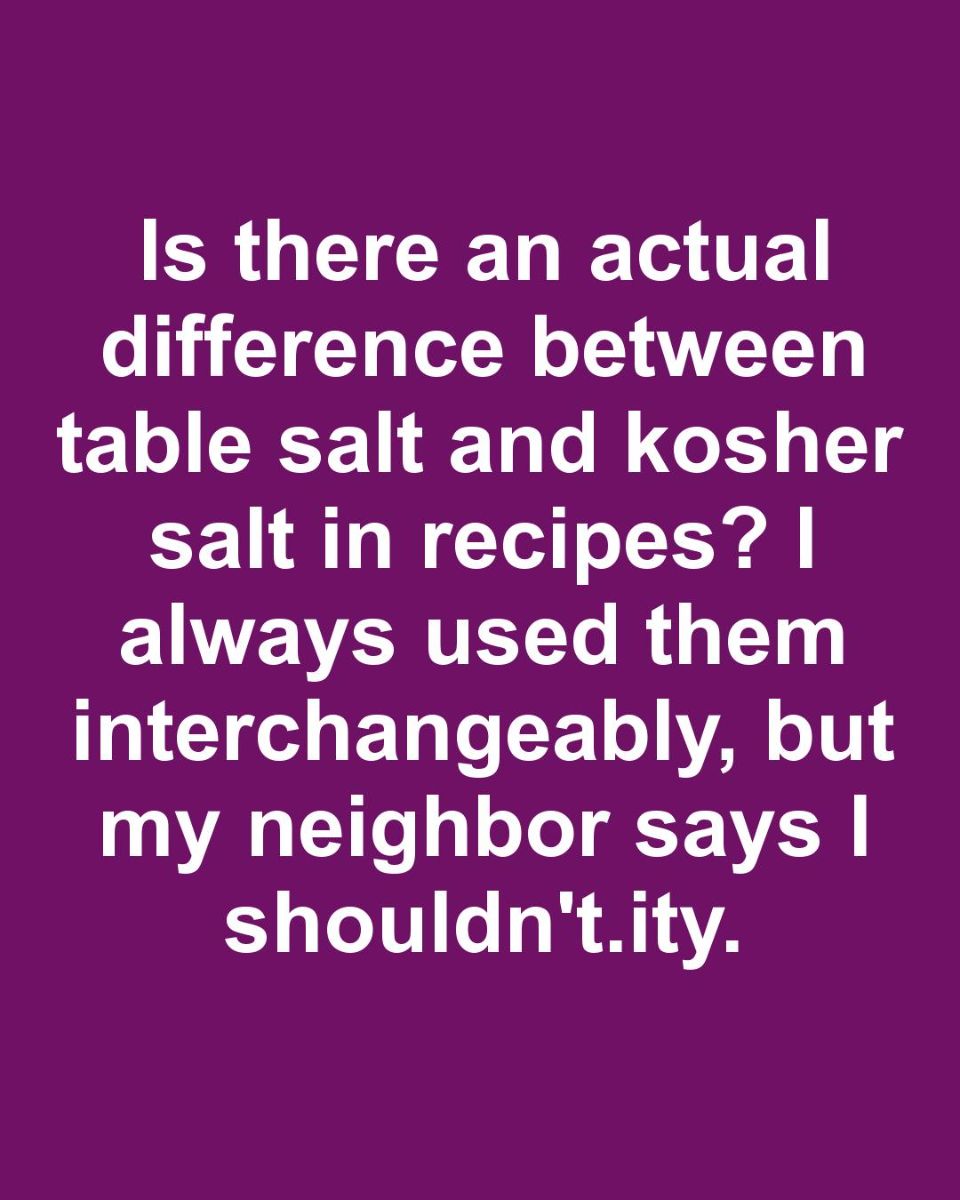Salt is a fundamental ingredient in cooking, known for its ability to enhance flavor and preserve food. However, not all salts are created equal. Among the most commonly used salts in the kitchen are table salt and kosher salt. While they may seem similar, they have distinct characteristics that can affect the outcome of your dishes. This article explores the differences between these two types of salt and provides guidance on when to use each in your recipes.
The Composition of Table Salt
Table salt is a refined salt that typically contains about 97-99% sodium chloride. It is often fortified with iodine, an essential nutrient, and contains anti-caking agents to prevent clumping. The fine granules of table salt dissolve quickly, making it a popular choice for baking and precise seasoning.
Advertisement
The Characteristics of Kosher Salt
Kosher salt is a coarser-grained salt that is free from additives like iodine and anti-caking agents. It gets its name from its traditional use in the koshering process of meats, where its larger crystals are effective at drawing out blood. The texture of kosher salt makes it easy to pinch and sprinkle, providing more control over seasoning.
How Table Salt and Kosher Salt Differ in Texture
The most noticeable difference between table salt and kosher salt is their texture. Table salt has fine, uniform crystals, while kosher salt has larger, flaky crystals. This difference in texture affects how the salt is measured and how it interacts with food. Kosher salt's larger grains mean it takes up more space, resulting in less salt by weight compared to table salt when measured by volume.
The Role of Salt in Cooking and Baking
Salt plays a crucial role in both cooking and baking. It enhances flavors, balances sweetness, and can even affect the texture of baked goods. In cooking, salt is used to season food, draw out moisture, and create a crust on meats. In baking, it strengthens gluten, controls fermentation, and enhances the overall flavor profile of the final product.
Flavor Differences Between Table Salt and Kosher Salt
While both types of salt are primarily composed of sodium chloride, the presence of additives in table salt, such as iodine, can impart a slightly metallic taste. Kosher salt, being additive-free, is often preferred by chefs for its pure, clean taste. The larger crystals of kosher salt also provide a different mouthfeel, which can subtly influence the perception of flavor.
The Impact of Salt Type on Recipe Measurements
Due to the difference in crystal size, a teaspoon of table salt contains more salt by weight than a teaspoon of kosher salt. This means that substituting one for the other without adjusting the measurement can lead to under- or over-salting. It's important to consider the type of salt specified in a recipe and adjust accordingly if you need to substitute.
When to Use Table Salt in Recipes
Table salt is ideal for recipes that require precise measurements, such as baking, where its fine crystals dissolve quickly and evenly. It's also useful for seasoning dishes where a quick dissolution is desired, such as soups and sauces. Additionally, table salt's iodine content can be beneficial in regions where iodine deficiency is a concern.
When to Use Kosher Salt in Recipes
Kosher salt is favored for its texture and ease of handling, making it perfect for seasoning meats, vegetables, and salads. Its larger crystals are excellent for creating a crust on roasted meats and for use in brining solutions. Kosher salt is also preferred in recipes where a clean salt flavor is desired without the metallic notes of iodized salt.
Common Misconceptions About Salt Interchangeability
One common misconception is that all salts can be used interchangeably without affecting the outcome of a recipe. However, due to differences in texture, flavor, and additives, substituting one type of salt for another can significantly alter the taste and texture of a dish. Understanding these differences is key to successful cooking.
Expert Opinions on Salt Substitution in Cooking
Culinary experts often advise against direct substitution of table salt and kosher salt without adjusting measurements. Many chefs prefer kosher salt for its pure flavor and ease of use, while table salt is recommended for precise applications. Experts suggest tasting and adjusting seasoning as needed when substituting salts to achieve the desired flavor balance.
Practical Tips for Choosing the Right Salt for Your Recipe
When choosing salt for a recipe, consider the role of salt in the dish, the desired texture, and the type of salt specified. For baking, stick to table salt unless otherwise noted. For cooking, use kosher salt for seasoning meats and vegetables. Always taste and adjust seasoning, and remember that a little experimentation can lead to discovering your preferred salt balance.
Advertisement
Conclusion: Making Informed Choices in the Kitchen
Understanding the differences between table salt and kosher salt can enhance your cooking and baking results. By considering factors such as texture, flavor, and recipe requirements, you can make informed decisions about which salt to use. Whether you prefer the precision of table salt or the control and flavor of kosher salt, knowing when and how to use each will elevate your culinary creations.

